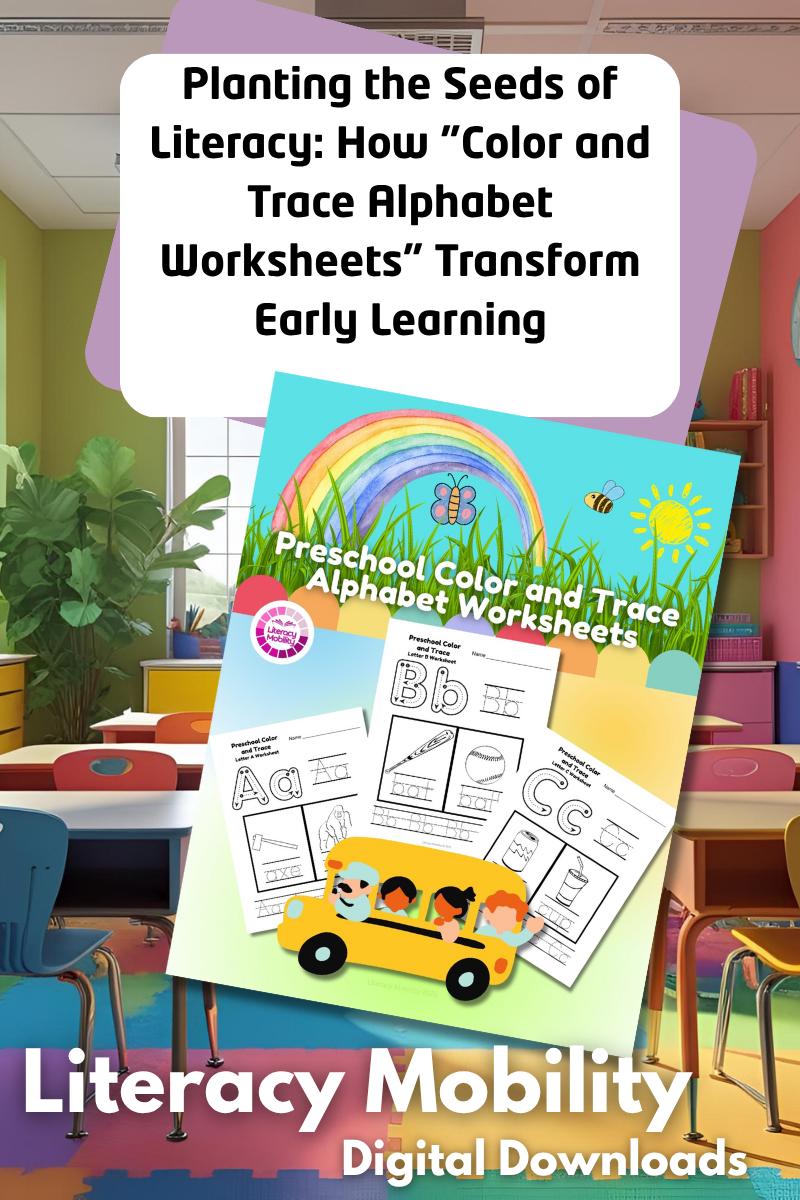
Planting the Seeds of Literacy: How "Color and Trace Alphabet Worksheets" Transform Early Learning
Share
As educators and parents, we know that building a strong foundation in literacy is crucial for a child's academic journey. The journey often begins with the alphabet – not just knowing the letters, but understanding their shapes, sounds, and how to write them. This is where engaging resources like "Preschool Color and Trace Alphabet Worksheets" become invaluable tools in any early learning environment.
These comprehensive worksheets are far more than just simple tracing pages; they are a thoughtfully designed pathway to developing essential pre-reading and pre-writing skills. Let’s explore the profound classroom benefits that these worksheets bring to preschool and kindergarten students.
1. Mastering Letter Recognition and Formation:

The core benefit of these worksheets lies in their systematic approach to letter learning. Each page is dedicated to a single letter, providing ample space for children to practice both upp
ercase and lowercase forms. Crucially, the letters include clear stroke order guides, which teach children the correct way to form each letter from the very beginning. This consistency helps prevent the formation of bad habits and builds a solid foundation for legible handwriting. Repetitive tracing reinforces visual memory, making letter recognition automatic and effortless.
2. Cultivating Essential Fine Motor Skills:
Handwriting isn't just about knowing the alphabet; it's about the physical ability to wield a pencil. Tracing activities are powerful exercises for developing fine motor skills. As children carefully follow the lines, they strengthen the small muscles in their hands and fingers, improve hand-eye coordination, and develop the pincer grasp crucial for writing. These foundational skills are critical not only for handwriting but also for other daily tasks like cutting, drawing, and dressing.
3. Building Early Phonics Awareness with Beginning Sounds:
What truly sets these worksheets apart is their integration of phonics. For each letter, students are presented with two charming illustrations of words that begin with that letter (e.g., "G is for gift and goat"). By identifying and coloring these pictures, children actively engage with the concept of beginning sounds. This multisensory approach – seeing the letter, tracing it, hearing the sound (when discussed), and associating it with an image – deeply embeds the letter-sound correspondence, a cornerstone of phonological awareness and future reading success.
4. Expanding Vocabulary and Pre-Reading Skills:
The inclusion of traceable word labels beneath each picture serves multiple purposes. It subtly introduces new vocabulary words, reinforces the visual representation of words, and provides additional practice in tracing and letter recognition within a word context. This exposure to print in a meaningful way bridges the gap between individual letters and full words, preparing young minds for reading comprehension.
5. Boosting Engagement and Fun with Coloring:
Let's face it, young children learn best when they're having fun! The opportunity to color the delightful illustrations on each page adds an element of creativity and enjoyment. This not only makes the learning process more appealing but also allows for a brief break from the intense focus of tracing, re-engaging their attention for continued learning. Coloring also further refines fine motor control and encourages artistic expression.
6. Versatile for Any Learning Environment:
These "Preschool Color and Trace Alphabet Worksheets" are incredibly adaptable.
- Classroom Centers: A perfect independent activity during literacy centers.
- Morning Work: Get students settled and focused at the start of the day.
- Homework: Reinforce learning at home and involve parents in the educational process.
- Homeschooling: A complete A-Z curriculum supplement for busy homeschool parents.
- Differentiation: Use for early finishers, remediation, or extra practice.
By incorporating these alphabet worksheets into your curriculum, you're not just providing a task; you're offering a comprehensive, engaging, and developmentally appropriate learning experience that lays a robust foundation for a lifetime of literacy. Watch as your preschoolers and kindergarteners confidently trace, color, and connect with the wonderful world of letters!



